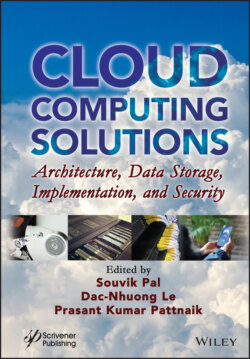Читать книгу Cloud Computing Solutions - Группа авторов - Страница 25
1.3 Grid Computing
ОглавлениеCarl Kesselman and Ian Foster first coined the term grid computing in the 1990s, which is characterized as resource sharing and critical thinking in unique, multi-institutional virtual associations [7]. We have to contrast grid computing’s classification with cluster. While clusters use the same operating system and hardware and run locally, grids involve heterogeneous computer systems that are interconnected with one another and distributed globally. The hardware and OSs run on the machines could also be distinct from each other [5, 8].
Grid computing is a convoluted component which has progressed by means of earlier advancements in parallel, dispersed and high-performance computing (HPC) [9, 10].
The real and specific problem that underlies the Grid concept is coordinated resource sharing and problem solving in dynamic, multi-institutional virtual organizations. The sharing that we are concerned with is not primarily file exchange but rather direct access to computers, software, data, and other resources, as is required by a range of collaborative problem-solving and resource-brokering strategies emerging in industry, science, and engineering. This sharing is, necessarily, highly controlled, with resource providers and consumers defining clearly and carefully just what is shared, who is allowed to share, and the conditions under which sharing occurs. A set of individuals and/or institutions defined by such sharing rules form what we call a virtual organization (VO) [2].
Computing grids are conceptually and logically like electrical grids. In an electrical grid, wall outlets allow us to connect to an infrastructure of resources which generate and distribute the electricity. When we connect to the electrical grid, we don’t even need to know where the power plant is situated or how the electricity gets to us. Likewise, in the IT industry, grid computing uses middleware to coordinate distinct IT resources over the network, allowing them to function and work as a virtual whole. The goal of a computing grid, like that of the electrical grid, is to provide users with access to the resources they need when they need them, and to provide remote access to IT assets, and aggregating processing power.
According to Zhang et al. [8], grid provides a series of distributed computing resources via LAN or WAN to the terminal user’s application, as if he/she is using a super virtual computer. This basic idea will realize safe and secure use and coordinate and organize resource sharing among the person, business group, organization and resources, and will produce virtual and dynamic organization. Grid computing is a technique of distributed computing. It also includes location and organization software and hardware to provide unlimited power. Its goal is to allow anyone in the grid to cooperate and access each other’s information. But cloud computing is better; it has many advantages over grid computing. Cloud computing grows from grid computing and provides the users with on-demand resources that are provisioned according to their application.
